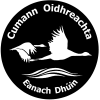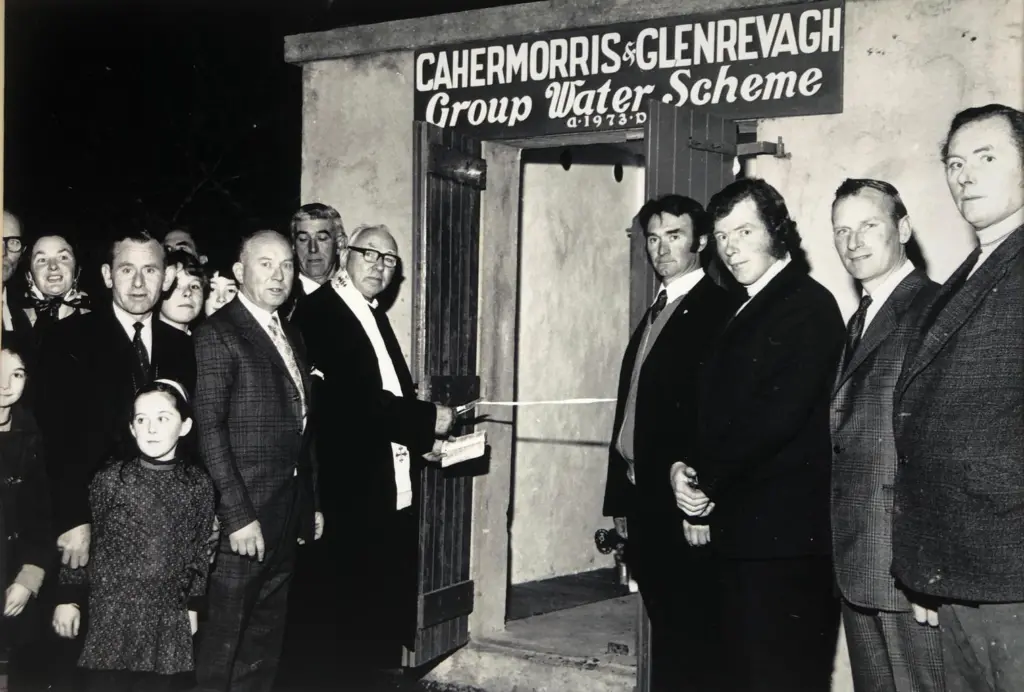
A short audio interview with Mary Newell (née Flanagan) by Evelyn Stevens, about the Cahermorri-Glenrevagh Group Water Scheme and the photo of the official opening in 1973. Read more

A listing of deaths registered in the townlands of Annaghdown parish within the Turloughmore registration district. Information recorded is date, townland, name, sex, marital status, age, occupation, cause of death, medical attendant. Links are provided to the register image from the General Register Office. Read more
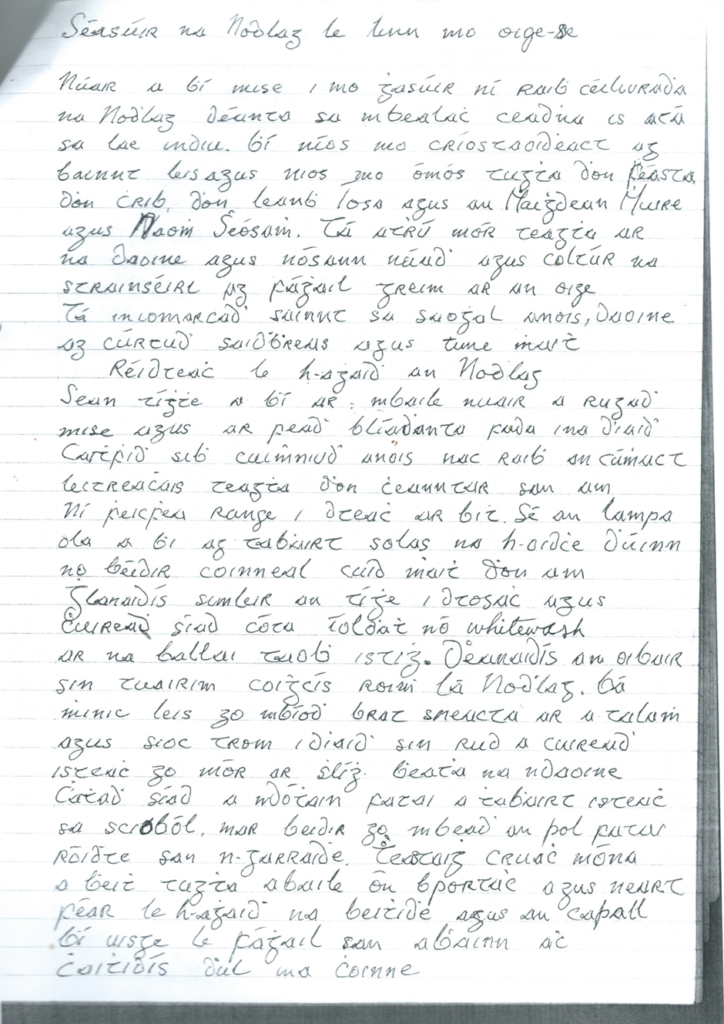
John Murphy or Seán Ó Murchú is a native Irish speaker from the parish of Annaghdown. In Addergoole village where he was raised there were many people who spoke mainly Irish, including his mother and uncle, and his father also learned to speak Irish. The Irish on this recording is the version of the language spoken in this area. John’s writing is in the old Irish script, an Cló Gaelach, and his spelling is the pre-standardised form. The notes were written by John in the late 1970s or early 1980s. This video was recorded on 22 July and 8 August 2022. Included below is an account 'Séasúir na Nodlag le Linn mo Oige-se' (the Christmas season in my youth), written by John in the old style Cló Gaelach script. Read more

Between 1720 and 1925, many local loan associations operated throughout Ireland, offering small loans to the 'industrious poor', for purposes such as buying grain, farm animals, or machinery. A scheme on the Kirwan estate at Castlehacket operated from the 1830s to the 1850s, which resulted in an excellent set of surviving records. A return of the state of the scheme in December 1853 is particularly interesting. It offers an insight into local conditions before and during the Famine, and records several inhabitants of the townlands of Bunatober, Cahermorris, Cluidrevagh, and Biggera, who died or emigrated during this period, as well as recording the progress of each person who took out a loan. Read more
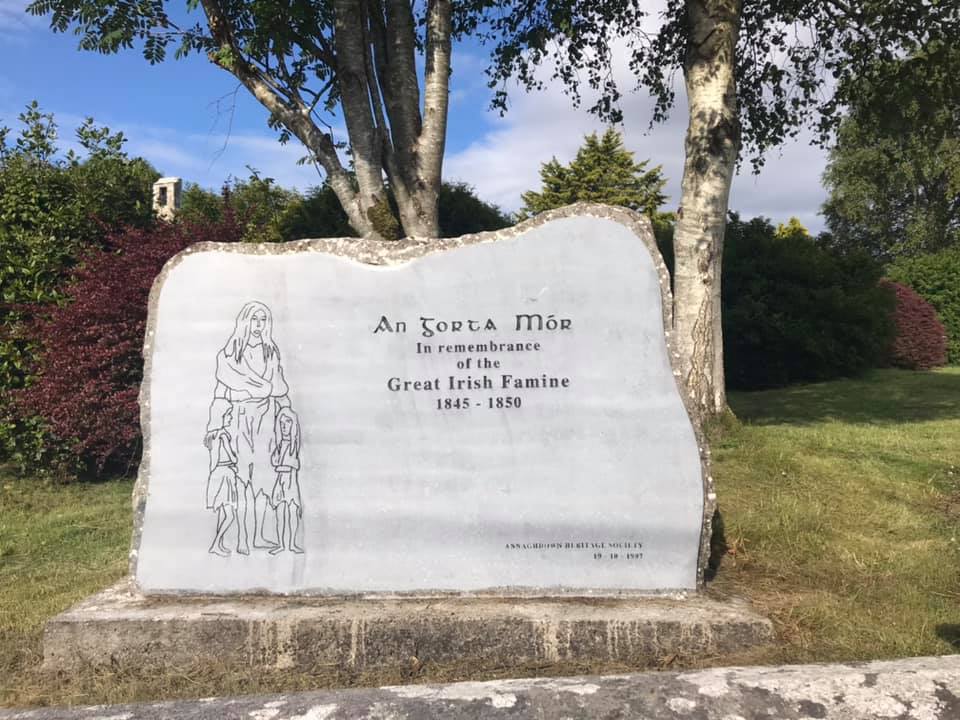
The Great Famine of 1845-1850 was a devastating calamity in the history of Ireland. It is believed that approximately a million people died from disease and starvation and another million of our people emigrated. There are several factors which contributed to the Great Famine. Irish living standards on the eve of the famine were very poor. The majority of the people had become tenants on their own lands. At the top of the scale were the estate owners followed by tenants farmers - at the bottom of the scale were the cottiers to whom the poorest parts of the estate were rented. They tried to eke out a living on land that was of poor quality and often had holdings of less than five acres. Read more

In the early twenties the playing fields of Galway gradually returned to normality after the inactivity associated with the militant years of the fight for freedom. This period was marked in particular by the resurgence of camogie. At the time the game in Galway had no worthwhile foothold in organised competition. True, it had been played in a haphazard manner in some areas and in some schools. An awareness of the necessity to tackle this situation began to develop in different parts of the county. Supporters were invited to meet and discuss tha position and it was decided to form a County Board. Sen. O’Duffy, the National Organiser, was invited to a meeting in Galway, at which a County Board was formed under the chairmanship of the late Mr. O’Callaghan, Principal of the Technical School Galway. Corrandrum were one of eight teams to affiliate. Read more
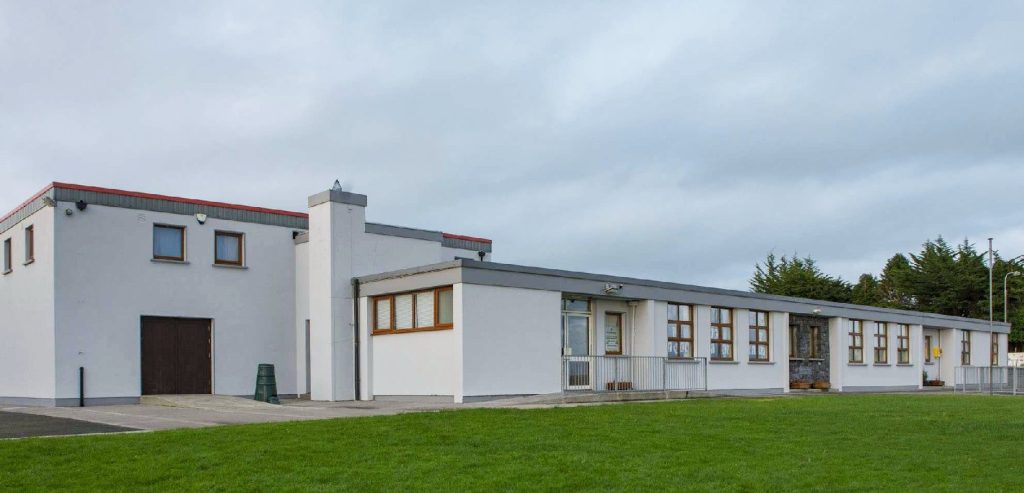
Corrandrum, or Cor an Droma in Irish, means 'the bend of the ridge', with 'the stone wall of the ridge' suggested as an alternative by the Irish Placenames Commission. In 1904, £237 was granted for the building of Corrandrum National School on an expenditure of £355 10s. The schoolhouse was to be built according to Plan No. 2, to accommodate a maximum attendance of 80 pupils. The first day of registration led to bigger numbers than this. The school was originally built on land donated by John Burke and his family, Corrandrum, in the early 1900s, and was opened to pupils in April 1907. It was a new school in the area - previously the children of the area attended Bawnmore, Corrandulla, Lackagh or Corofin schools. Read more

Births registered in the Annaghdown townlands of Turloughmore Registration District between 1876 and 1879 Read more

Was Annaghdown parish populated during the time of Brian Boru and if so did the inhabitants ever hear of the great king? Well we know that St Brendan and St Briga with their communities lived in Annaghdown long before the times of Brian the brave. Dare we enquire how far back in time we can go regarding human habitation in this parish? We hit the jackpot way back in 1934 though few people knew about the discovery then, and perhaps not many know about it today. Remain in ignorance no longer for this is how it happened. At that time the local farmers were forced to try a variety of means available to them to eke out a living on their small holdings of land - not only by raising stock but by such enterprises as cultivating sugar beet or by selling turf, cabbages or potatoes. During the month of November 1934 potatoes were selling at 4d. per stone, butter at 1 shilling a lb., eggs at 2s. 6d. a score, hay at 25 shillings a cwt. while two year old heifers and bullocks would realise 46 each. Read more

One hundred years ago at the end close of 1920, tensions were high across Ireland. November was a bloody month, with British Crown Forces intensifying their campaign of terror. The murder of Eileen Quinn from Kiltartan near Gort, a pregnant mother of four children, followed by the abduction and murder of Fr. Michael Griffin in Galway shocked the world. This was followed by `Bloody Sunday' in which twenty individuals identified as British agents by Michael Collins and his comrades were targeted and fifteen killed. In revenge for these deaths, Auxiliaries and Black and Tans killed at least fourteen and injured dozens in and around Croke Park that afternoon. At the same time, two high-ranking IRA officers, Dick McKee and Peadar Clancy, as well as Clareman Conor Clune were being tortured by Auxiliaries in Dublin Castle. They had been picked up the night before having been betrayed by an informer. Their bodies were found the next day battered, bayoneted and shot to death. It was a big blow to the IRA, but morale was boosted a week later when at Kilmichael, Co. Cork, the 3rd West Cork Brigade ambushed an Auxiliary convoy, killing seventeen. On 29 November, possibly the most gruesome act of the conflict occurred with the abductions and brutal murders of the Loughnane brothers of Shanaglish near Gort by the Auxiliary Division of the RIC. Read more
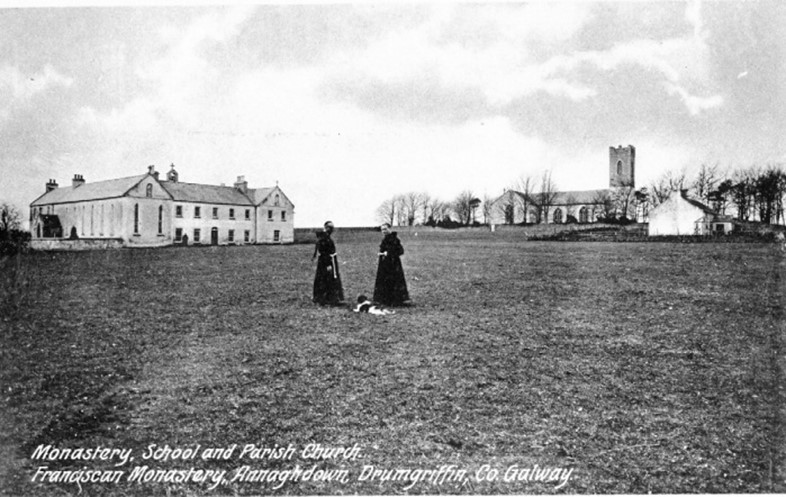
The building was originally known as Annaghdown Monastery in the Post Office district of Drumgriffin. The first group of Brothers to come in 1851 comprised of four members. They were led by Br. Elias Silke, a renowned teacher of Irish and History. Among those he taught at Errew Monastery, Castlebar was Canon Ulick Bourke who later became a leading professor of Irish at Maynooth and who left him a signed copy of his famous "The College Irish Grammar" as a token of appreciation for his former teacher of Irish. Br. Francis Kelly was a native of Kilkerrin, Ballinasloe. Another member of the founding group Br. John Concannon travelled to New York later where he joined the Franciscan Brothers in Brooklyn. Br. Clement Halloran was the fourth member of the original group. On their arrival from Errew Monastery they were granted a three acre site by Francis Blake of Cregg Castle, on which they were directed to erect a monastery and school. According to a written account,the site comprised of nearly three acres of bare, rocky land". Immediately on their arrival, the Brothers began to teach "in a small thatched house across from the Chapel". Shortly afterwards they purchased a farm from John Butler, Esq. of Tonagarraun, and built a temporary dwelling house there while they were completing their monastery. This was probably a small building where the local supermarket now stands. Read more

Next was the potato harvesting or ‘digging the potatoes’ as was the local term. The first thing was to have covering for the ‘spuds’ after digging to protect them from frost and rain. Different materials were used for this such as straw and sedge, but in my time it was ‘scraws’. These were the surface of certain parts of bogland. They were usually two foot square, cut with a sharp spade, allowed to dry a bit and brought by cart to the potato field. The potato was a very stable diet and was eaten by every household in Ireland in days gone by, even twice daily by the poorer families in the countryside. So great care was always taken to save and protect the crop. During our school going time we were given one week off to help pick the ‘spuds’. We dug our crop with horse and plough but I did see some of the smaller land owners in Addergoole dig them with spades. Digging by plough was done by ploughing out every second drill for a number of drills. Then the men (although I have seen women do the job too) would tie canvas bags round their legs and get down on their knees and search the ploughed drill for the ‘spuds’ and when found would leave them behind them for picking. Two drills were always put together that is to say four drills would make two lines of ‘spuds’. The cart was put on the horse and brought between the two lines for the pickers. The big spuds for human consumption were put into the cart and when filled were tipped into the pit. The local name for the pit in this area was a ‘hole’ of potatoes. Some two or three weeks after finishing the digging of the ‘spuds’ a covering of clay would be put on the pit of ‘spuds’ to protect them from severe frost during the winter. The clay covering was about five or six inches thick and well packed. Read more

There isn't any chestnut tree spreading over the 'smithy' at the end of our village, as in that poem we learned at school; but ivy, clawing its way over the walls and on to the roof, and a swath of brambles spreading across the two small shuttered windows. And children on their way home from school do not look in at the open door; for not only do they now pass swiftly by in the luxury of bus and car, the sparks do not fly off the anvil anymore, as the forge now lies derelict and obsolete, having long ceased to be of use, the blacksmith's craft made redundant by the onset of high-powered farming and automation, and no work-horses in need of shoeing... Read more
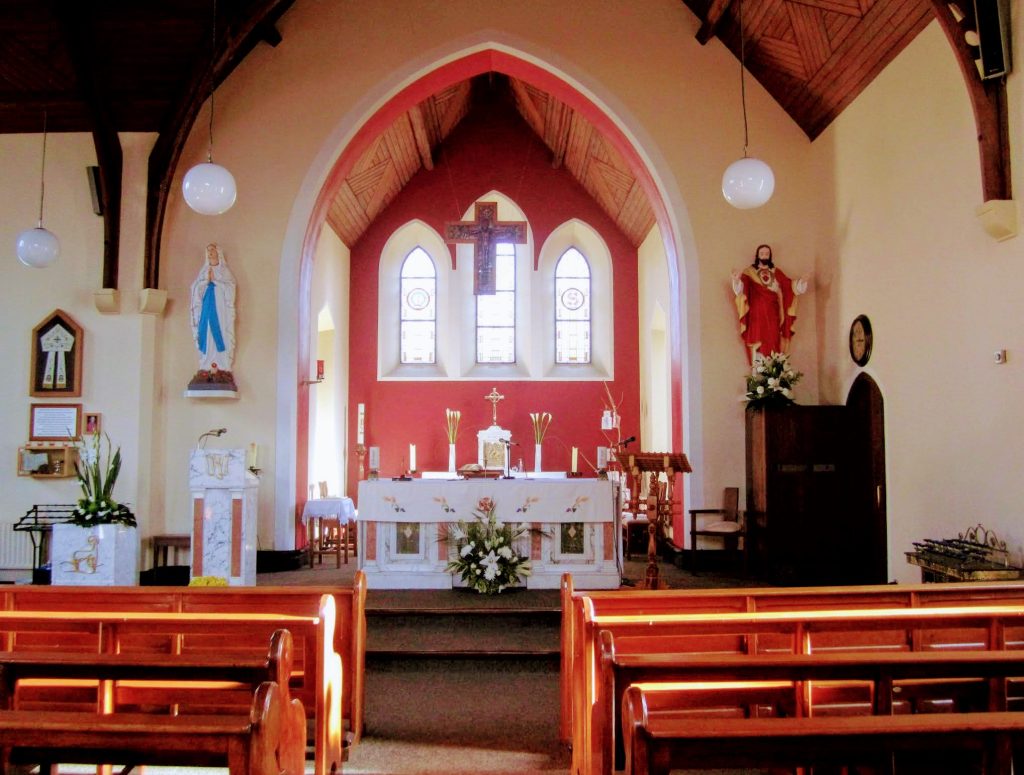
St Brendan's was dedicated on 12 July 1903 by Archbishop Healy of Tuam who referred to it by the name shown above - presumanly to distinguish it from St Brendan's, Corrandulla. The dedication ceremony was described in The Tuam Herald and The Galway Express of 18 July 1903. It was, to quote the Herald, "a ceremony of great stateliness and pomp". On 24 July 2003, there were centenary celebration ceremonies in St Brendan's followed by a reception in Annaghdown school. A commemorative booklet was printed to mark the occasion - it includes the newspaper descriptions of 18 July 1903. The church ceremonies centered on Mass concelebrated by Canon Martin Newell, Parish Priest of Annaghdown, Fr Oliver McNamara, Curate of Annaghdown and Canon Michael Goaley - Parish Priest of Glenamaddy and a native of Annaghdown. A number of priests who had served in Annaghdown were present in the sanctuary. Read more

Of the very many interesting functions of which the Archdiocese of Tuam has been the centre for some months past, none has exceeded in interest that which was witnessesd in one of its most remote parishes when on Sunday morning last his Grace the Most Rev. Dr Healy, Archbishop of Tuam, solemnly dedicated the new church of St Brendan in Annadown, in the presence of a large and edified gathering of parishioners and friends from the surrounding districts, including a strong contingent from Galway City. The new church, the building of which was begun in the early part of the year 1900, occupies a very fine situation in the centre of the Annadown district, around which place cling so many hallowed memories of much that is great and spirit-stirring in the glorious history of the birth and development of Christinaity in Ireland. Replacing, as it does, an old structure which was only intended for temporary use, pending the provision of a more suitable place of worship, the new Church of St Brendan, besides proving an ornament to its locality, will fill a want long felt in so far as the religious requirements of the people of Annadown are concerned. Read more
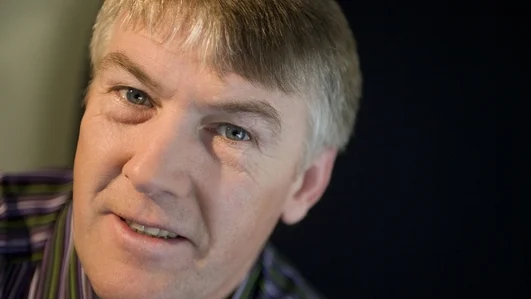
Labhair Seán Ó Murchú s'againne le Máirtín Tom Sheáinín ar Ardtráthnóna agus é ag fágáil slán le Raidio na Gaeltachta ar 4 Samhain 2020. John Murphy of Cregduff speaks to Máirtín Tom Sheáinín on Ardtráthnóna on the day of his retirement from Raidio na Gaeltachta, 4 November 2020. Read more

We are pleased to launch our podcast with an episode on Living in a Thatched House. Thatched houses are to be found dotted around the Irish countryside, and particularly in west Galway. Evelyn Stevens has lived in a thatched house in Annaghdown since the 1980s, and here she joins Paul Greaney to discuss the joys and challenges of living in a thatched cottage. This complements our recent videos John Joe Duggan: Thatching / Tuíodóireacht and Thatching at Cloonboo with Marika Leen. Read more

Below are births registered in the Annaghdown townlands of Turloughmore Registration District between 1871 and 1875. Read more

Below are three photos from the Boys' National School in Corrandulla, taken during the 1930s and 40s. Sincere thanks to John Murphy, Cregduff, for these photos. Read more

Evelyn Stevens talks to Dutch thatcher Marika Leen about the art of thatching and how she came to learn the trade. Filmed in Cloonboo, Annaghdown, Co. Galway in summer 2020, at the thatched cottage of Pete Smith and Evelyn Stevens. An initiative of the Annaghdown Heritage Society. Labhraíonn Evelyn Stevens leis an tuídóir Ollainnis, Marika Leen, faoi chéird na tuíodóireachta agus an bealach a d'fhoghlaim sí an céird. Taifeadta i gCluain Bú, Eanach Dhúin, Co. na Gaillimhe, i samhradh 2020, ag teach ceann tuí Pete Smith agus Evelyn Stevens. Tionscnamh de chuid Cumann Oidhreachta Eanach Dhúin. Read more

Below are marriages for the Roman Catholic Parish of Annaghdown registered in Turloughmore Registration District between 1864 and 1874. Note that there appear to be large gaps corresponding to gaps in the church marriage register. Read more

Below are births registered in the Annaghdown townlands of Turloughmore Registration District between 1864 and 1870. Read more
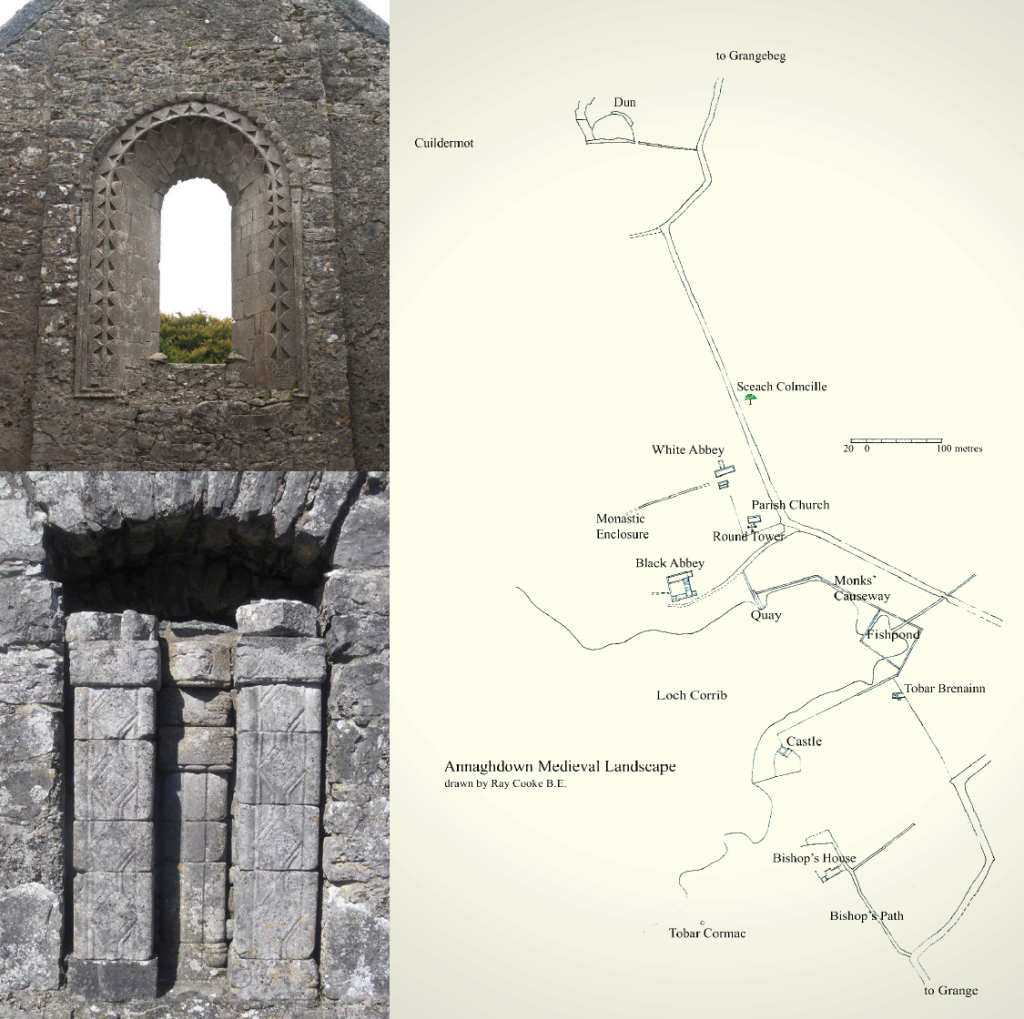
The medieval monastery and bishopric of Annaghdown was once the most important ecclesiastical centre in Connacht after Tuam Archdiocese. The monastery of Annaghdown was founded by St Brendan and his sister St Briga around 550 AD in the territory of the little-known Delbhna Cuil Fabhair, on the south-east shore of Lough Corrib. This territory of Magh Seola (later the barony of Clare) was taken over after 800 by the Uí Briúin Seóla, ancestors of the Uí Fhlaithbertaig, and Annaghdown grew in power, attracting in the late 12th century two Continental monastic orders, the Arrouaisians and Premonstratensians, and rising after 1179 to become one of the five bishoprics of Connacht. Read more

In 1659 the first service was established to convey mail from Dublin to Galway. By 1807 there was a regular mail coach service, taking almost 15 hours to complete the journey. With the completion of the railway in 1851, trains were then used for the transportation of letters and parcels.
In 1853 it became obligatory to use postage stamps. By 1872 there were 5 letter boxes in Galway city, at Rockbarton, Salthill, Nile Lodge, Mainguard Street and Eyre Square. At first all incoming mail had to be collected at the Post Office. It was not until the end of the nineteenth century that a free delivery service was set up. Postmen traversed their district daily on foot walking up to twenty miles. Cycle deliveries began in 1901, with the postman receiving 1 shilling weekly for cleaning and maintaining the bicycle. It was not until the 1960s that post vans were introduced into rural areas. Read more
